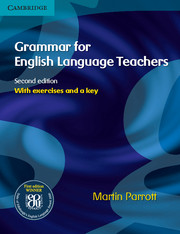Summary
Key considerations
Some languages have a single ‘future tense’, whereas English uses a lot of different verb forms to refer to future time (e.g. will, going to, will be + -ing). Learners often find it bewildering to have to choose an appropriate form from so many, and in general, choosing forms is more problematic than constructing them.
Most learners want rules of thumb to help them choose appropriate forms, but these rules of thumb are also sometimes problematic.
• Some of these rules of thumb depend on apparently ‘fuzzy’ distinctions (for example, the difference between an ‘arrangement’ and a ‘plan’; between a prediction which is based on present or past evidence and one which is not).
• More than in most areas of grammar, the rules of thumb for choosing between future tenses are approximate. These rules of thumb are based on the meaning we want to express. However, in making choices we are also infl uenced by personal preferences and stylistic factors. Most real texts and transcriptions of speech which include future tenses include choices not accounted for by the rules of thumb.
In the early stages of learning, teachers and materials often concentrate on one future form, and encourage learners to use this as though it were a general ‘future tense’. Usually this form is going to.
In this chapter we look at the most common future forms, and consider the meanings as though they were clear and separate. These definitions of meaning are the ones we usually give to learners. On pages 207–10 we explore some of the other factors that infl uence our choice of tenses.
We look at the different future forms in roughly the order they occur in most courses. We concentrate on meaning much more than on form but there are cross-references to the pages that deal with form in more detail.
In Chapter 11 we look at modal verbs. These can normally refer to the future as well as the present.
Going to
Form
We generally refer to this form as the going to future, and teach it as be + going to + bare infinitive. It is also logical to think of this as the present continuous form of go + the full infinitive.
- Type
- Chapter
- Information
- Grammar for English Language Teachers , pp. 200 - 217Publisher: Cambridge University PressPrint publication year: 2010



